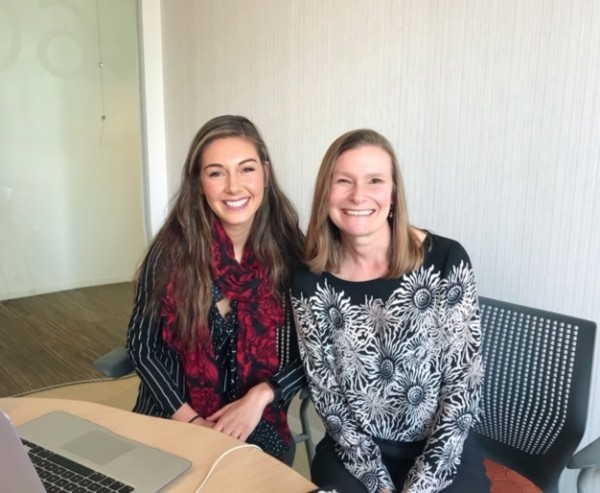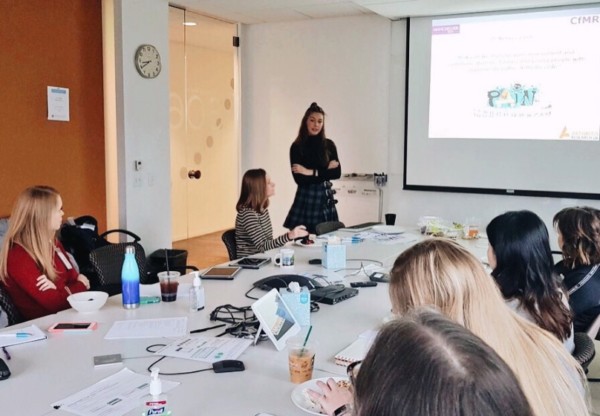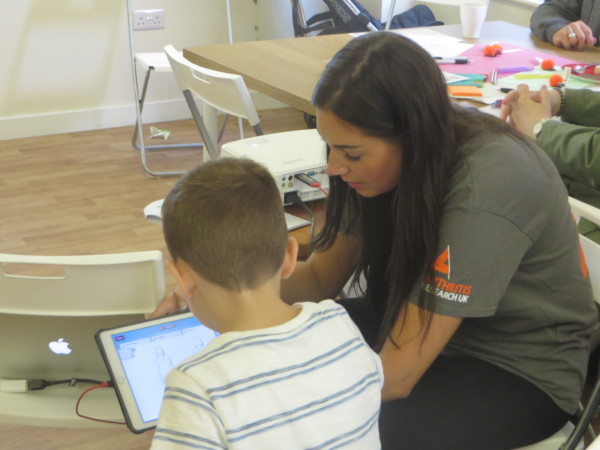Learning from one of America’s leading paediatric pain research groups benefits Manchester BRC research
Dr Rebecca Lee is researching chronic pain assessment in Juvenile Idiopathic Arthritis. Her work mainly involves developing and implementing new eHealth tools, such as ‘My Pain Tracker’™, to improve the assessment and communication of pain in paediatric healthcare settings.
In this blog, Dr Lee considers what she learnt from her three week visit to one of the USA’s top five paediatric research centres, the Seattle Children’s Research Institute, and the applications for her own research.
Travelling to other institutions makes a big difference!
Over the past few years, my work on eHealth tools has overlapped with that of Professor Tonya Palermo, who is a world renowned pain expert and psychologist working in paediatric eHealth research. Because we are in the same professional networks and research areas, I was keen to learn more about pain management in children from her and her team in Seattle. Fortunately, I was awarded a travel grant from the Wellcome Trust Institutional Strategic Support fund, which supports the skills development of biomedical researchers through visits to other research environments.

One of the ways in which Professor Palermo’s team at the Seattle Children’s Research Institute is managing paediatric pain is via an app called WebMAP. The app provides an 8-week online self-management programme aimed at improving children’s and young people’s understanding of chronic pain. The users can access stress management and relaxation skills training, skills for help with schooling and sleep and lifestyle issues, which are all affected by pain. In addition, a parent version is available which complements the main programme.
There can be a huge gulf between scientific theory and a patient’s ‘lived experience’ of a condition, so it was great to see this tool in action from a user’s perspective. Exploring the content of the tool also made me appreciate the range of skills healthcare professionals need to facilitate patient pain management effectively, as well as the demands placed on young people who are trying to manage their condition on their own.
Paediatric pain management clinics can hugely improve a patient’s function in a few weeks
Some institute researchers have additional roles as clinicians at Seattle Children’s Hospital, so I was able to observe patients who were being assessed in the paediatric chronic pain management clinic, and those taking part in an intensive pain rehabilitation programme (up to 4 weeks). I hadn’t anticipated that I would meet anaesthesiologists working in this setting. Their focus was on ‘rewiring the pain system’ through non-pharmacological approaches, so that children could improve their movement and overall quality of life. As well as intensive physical and occupational therapy, patients met with a psychologist up to three times a week and a teacher who helped them with school work. It was great to learn more about the principles of these comprehensive programmes and witness the improvement in some of the children in a short period of time.
US paediatric pain research teams include multi-disciplinary professionals with wide ranging backgrounds all focused on pain

Professor Palermo’s research team is made up of mainly clinical psychologists and anaesthesiologists. In my current research group, I am one of only a few researchers with a psychology background. Most are epidemiologists, geneticists and clinical rheumatology academics. The main research focus tends to be disease or condition specific, with fewer colleagues working on symptom specific research, such as pain.
Talking to these US colleagues helped me to consider pain research from very different perspectives. The psychologists, who had both research and clinical skills in managing paediatric chronic pain, reinforced how important it is to interweave knowledge and skills from both sides for better patient outcomes.
Understanding the sensory experience of pain in the laboratory
‘Quantitative sensory testing techniques’ (experimental methods for inducing pain techniques) are being used by Professor Palermo’s team to explore how pain can become chronic following surgery in young people. We don’t carry out this kind of pain research in Manchester and not all pain laboratories have access to the necessary equipment.
The techniques stimulate certain skin receptors associated with different types of pain perceptions (heat, cold and pressure), and the Seattle research team uses water baths, heated thermodes and algometers to stimulate nociceptive pain pathways (biological responses to painful stimulus).
In chronic pain, the pain experience is not just a biological response, but a physiological, psychological and social experience, and these aspects are not easily replicated in laboratory settings. So although, it was interesting to learn more about how we can replicate the biological response to painful stimuli, it’s also important to reflect on the limitations of these methods and on the strengths of our work which is mainly with patients themselves.
Little is known about the use and misuse of opioids for treating chronic pain in children
The under-researched use of opioids, in young patients who have chronic pain, is addressed by Seattle team members.
We had fascinating discussions about what the team categorised as ‘misuse’, even with prescribed opioids. For example, patients saving up medication and then taking it in one go or administering it differently to the prescription requirements.
My research focuses on pain assessment and non-pharmacological management. It was enlightening to hear about the challenges involved in pharmacological treatments, particularly the safety and efficacy of medications for treating paediatric chronic pain, in the context of increasing public health concerns about opioid use in the US.
Applying these reflections to my pain research
My experiences in Seattle are shaping my research and the future direction of our eHealth research at the university.
The trip confirmed that eHealth is the way forward in paediatric pain assessment due to the benefits: for patients – more regular assessment and accurate reporting and for researchers – the collection of richer pain data.

However, the US team faces similar issues to us in implementing these kinds of tools in their healthcare system i.e. cost and competing demand for other resources. We will maintain our collaboration so we can learn from each other as we navigate through this new area.
As a result of this trip, I am also applying for funding that will allow me to conduct research with more varied chronic pain diagnoses. It’s clear that eHealth tools also have utility with children who have other types of pain, such as chronic abdominal pain or chronic regional pain syndrome. Our team is starting to develop new versions of ‘My Pain Tracker’™ for other patients and hopes to liaise with allied health professionals, such as psychologists and physiotherapists, to help us with this work.
